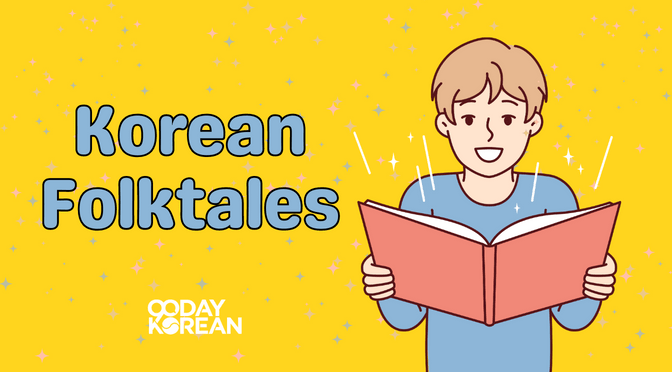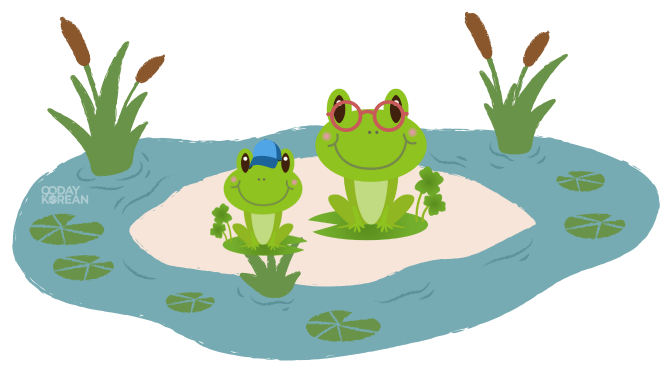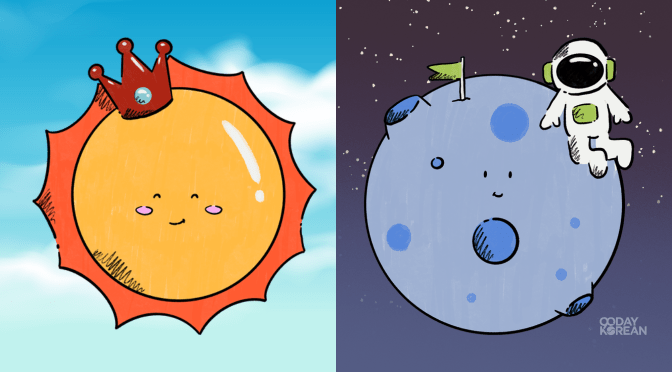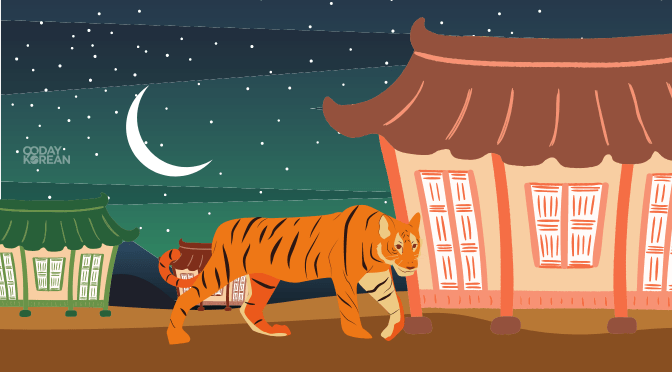Today, we are introducing you to Korean folktales. They can make for an interesting lesson in the Korean language. However, they can also simply be fun to read in your free time!

Not every Korean lesson has to be just about learning vocabulary and grammar; it does get tedious. And actually, not everything revolving around Korean even has to be a lesson at all; it could simply be something you do for fun, so let’s learn a bit more about these Korean folklore and folk tales.
Korean Folk Tales
Every country, culture, and person has at least one fable, fairy tale, folklore, or folktale that they grew up with. And so there are also versions of Korean fairy tales, folk tales, and stories in general. The stories and characters may vary slightly, but they all provide the same purpose.
Each of these tales is a lesson on the history and values of the culture they were made up, giving children – and even adults – a deep insight into how the world was before them. These stories are often also beautiful and memorable, leaving impressions on the child that will last a lifetime. Chances are, their own children will come to learn the same fables once they’re born!
Although many of you share no ties to Korean culture, it doesn’t mean you wouldn’t enjoy reading Korean folk tales from them. They can provide useful insight into the culture and history, and language but also be fun and impressive to read. So, let’s keep reading to find out what are some great Korean folktales you should give a try!
What is “folktale” in Korean?
The word for “folktale” in Korean is 설화 (seolhwa).
They may also be referred to as 민간 설화 (mingan seolhwa) or 민화 (minhwa).
Popular folktales in Korea
In this section, you can find folktales that are popular among Koreans. They make for an excellent place to start in getting to know Korean folktales. We’ll also share the Korean versions of each folk tale below.
The Green Frogs
This is considered one of the biggest must-reads for Korean children by their parents. It teaches children, above most, about filial piety, which of course includes things such as listening to your parents.
In this story, a young frog and his mother live together in a pond. The young frog would often ignore it when his mother instructed him to do something. This made his mother feel upset and even ashamed, wondering what action to take to get him to change his ways. All of her worries ultimately make her sick when she’s older, with the young frog still continuing his habits of neglect.

On her deathbed, because the young frog always refused to do as she asked, she requested for him to bury her by the riverbank instead of the hill, although the hill was where she actually wished to be buried. Unfortunately, her death finally got the young frog to realize that he should have been listening to what she was saying. Thus, he does what he thinks is her will and buries her next to the river.
Sadly, when the water of the river rises as it rains, the mother’s grave gets washed away. The young green frog cries inconsolably as it continues to rain, and this is also where the Korean myth about why frogs cry during rain comes from.
You can read the full story here. You can find the Korean version here.
HeungBu and NolBu
This famous Korean folktale relies heavily on Confucianism, emphasizing once again filial piety, in this case, especially the importance of showing respect to your elders.
In this story, Heungbu, the younger brother, takes care of a swallow with a broken leg. Once the swallow has healed up, as a show of gratitude, it rewards the younger brother with magical riches. The older brother, Nolbu, then attempts to gain for himself the same kind of good fortune his younger brother has had but fails to do so, in fact creating the opposite.
The setting is that the younger brother is a good person, but the older brother is a bad person. However, although the older brother is regarded as a bad one, his good younger brother still forgives him for all he has done. He even lets his older brother come live with him at his house, and as they live together, his older brother becomes a better man.
You can listen to the full story here. You can find the Korean version here.
The Sun and the Moon
The Sun and the Moon is another classical Korean folk tale that even many foreigners have heard of, in and out of Korean classrooms.
At the center of the story, we have a young brother and a sister. One day, their mother is on her way back from work when she comes across a tiger. The woman is carrying a basket of rice cakes on her head, and the predator offers not to eat her in exchange for one rice cake.
As the mother walks home, she keeps dropping pieces of rice cake for the tiger’s meal. But once she runs out, the tiger finds itself still not satiated enough and eats the mother. Even then, the tiger continues to be greedy for something to eat, so it puts on the mother’s clothes and goes to her house to find her family.

However, the children quickly realize that it is not their mother. To escape from the tiger, they climb up a tree next to a well. The tiger then attempts to climb up the tree as well. As they fear for their lives, the children cry out for the heavens to send them a rope so they can climb up to safety. To their surprise and the tiger’s dismay, a rope appears for them, and the children use it to ascend to the sky.
The tiger also asks for a rope, but the one it is sent is rotten. Thus, as it tries to climb it up to the sky, it falls to its death instead. The children, on the other hand, become the sun and the moon we see in the sky in our everyday life, even today.
You can read the full story here. You can find the Korean version here.
The Rabbit’s Liver
Although the message behind this story may be more complicated than the others, this can be an important one to read. It teaches a lesson of how those with more power try to take advantage of those they perceive to be weaker and how the “weaker” one should take action against this.
One central character in this story is The Ocean’s Ruler, who becomes critically ill, but his doctors do not know how to fix the situation. A healer then thinks the king would only survive by eating a rabbit’s liver. A turtle gets chosen to go up to land and find a rabbit.
The turtle does indeed come across a rabbit, but first, it must gain the rabbit’s trust. Thus, it gets friendly with the rabbit, eventually starting to tell stories of the amazing underwater kingdom it comes from. The turtle then extends an invitation for the rabbit to come and visit the kingdom to meet the other marine animals.
As soon as the rabbit arrives in the underwater kingdom, it is taken as a prisoner. The ruler demands its liver, but the clever rabbit claims that while it’d be an honor to give up its kidney for the ruler, it left it back on land. So, the turtle and rabbit are ordered to return to land to fetch the kidney, but as you can guess, the rabbit never went back underwater again.
You can read the full story here. You can find the Korean version here.
The Tiger and the Dried Persimmon
Finally, we have this popular story, of which several versions exist. The version that is the most common is the one we will present to you here. In each version of the story, the lesson is about wisdom, with some aspects of filial piety sprinkled in.
Surrounded by mountains existed a small village. Near the village lived a tiger, and the villagers would terrorize him whenever the tiger showed up at the hill’s peak. On one cold night, it had snowed so much that the peak was covered, and the tiger descended toward the village. The tiger was hungry, having not eaten for days already.

It had just reached the door of a home, and when indoors, it heard a baby sobbing. The mom was trying to calm the baby down, telling the baby not to cry as there was a bear outside, but the baby just kept on crying. The tiger was confused why the baby kept on crying and wasn’t scared of the bear everyone else was so scared of.
The mom kept trying to calm down the baby, now talking about a tiger outside, but the baby just kept on crying. Now the tiger was getting terrified of the baby, as no other living creature had ever not feared the tiger before. Once the mother offered dried persimmons to the baby, it finally stopped crying. The tiger wondered if a persimmon was more fierce and more fearsome than the tiger was.
Just then, there was a sudden sound of a thump, and something heavy landed on the tiger’s back. Thinking a persimmon had dropped on it, the tiger began fleeing for its life.
In reality, it was a burglar that had landed on the tiger’s back, now scared for his own life, having realized he was on the back of a tiger and not a cow. The burglar held tightly of the tiger’s back until he found a tree branch to grab hold of and whisk himself to safety.
The tiger, too, was now feeling relieved and secure, thinking the evil persimmon had finally left it in peace, even thanking God in heaven for offering the tiger some grace.
You can read the full story here. You can find the Korean version here.
How can folktales help in learning Korean?
As mentioned above, folktales can simply be a fun free time activity. Yet, you’ll still be engaging with the Korean language in some way and learning about Korean culture, Korean customs, history, and way of thinking.
More seriously, folktales make for great reading practice. Because they are typically geared toward children, they are not overly complicated to understand. You may also learn plenty of new vocabulary from these folktales, especially if you have both the original Korean story and its English translation handy to help you out.
What is the difference between myths and folktales?
Previously, we already introduced you to some of the famous Korean myths. You may be interested in reading those next if you have not yet, as they can be similarly interesting.
However, while folktales focus more on teaching important lessons, the stories in myths are more about how the world around us on earth was created, legends, why we have different seasons, and so on. For example, the story of The Sun and The Moon, introduced above, could also be viewed as a myth rather than a folktale due to its themes.
What to learn next?
If you find this topic interesting and want to have an idea on other related topics, here are some of our recommendations from our blog.
Korean religion – Useful for learning about Korean Shamanism, Buddhism, Christianity, and other religions in Korea.
Korean culture – Discover and gain knowledge about traditional and modern cultures practiced in Korea.
Korean children’s book – Featured here is a list of Korean stories that’ll teach you the language through literature.
Wrap Up
Which of these Korean folktales did you think was your favorite? Let us know below in the comments! For more Korean reading material, why not try manhwa next?
The post Korean Folktales – Stories that teach important lessons appeared first on 90 Day Korean.
 Learn to read Korean and be having simple conversations, taking taxis and ordering in Korean within a week with our FREE Hangeul Hacks series: http://www.90DayKorean.com/learn
Learn to read Korean and be having simple conversations, taking taxis and ordering in Korean within a week with our FREE Hangeul Hacks series: http://www.90DayKorean.com/learn
Korean lessons * Korean Phrases * Korean Vocabulary * Learn Korean * Learn Korean alphabet * Learn Korean fast * Motivation * Study Korean


Recent comments